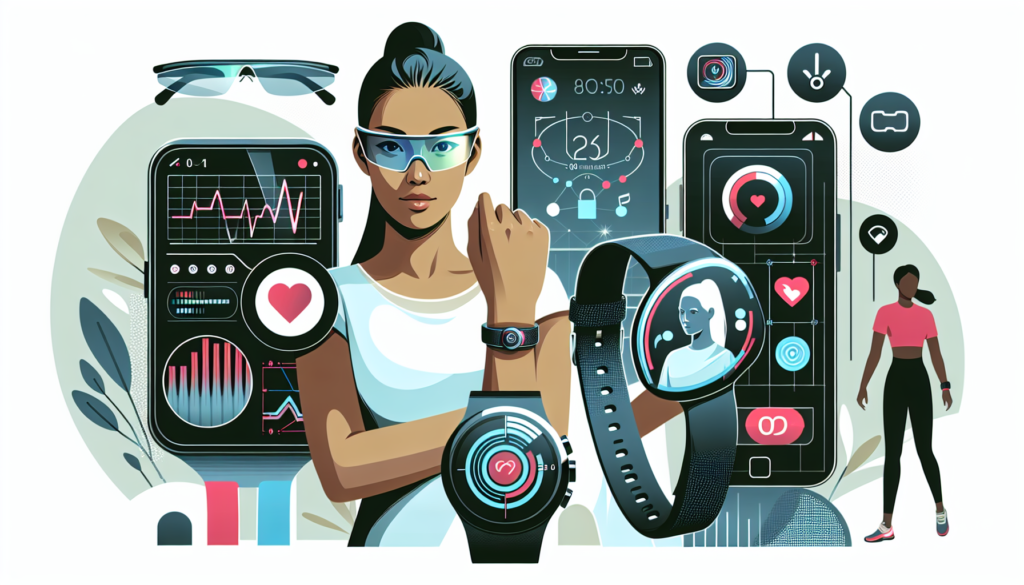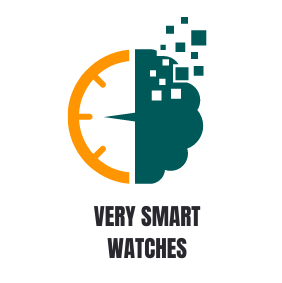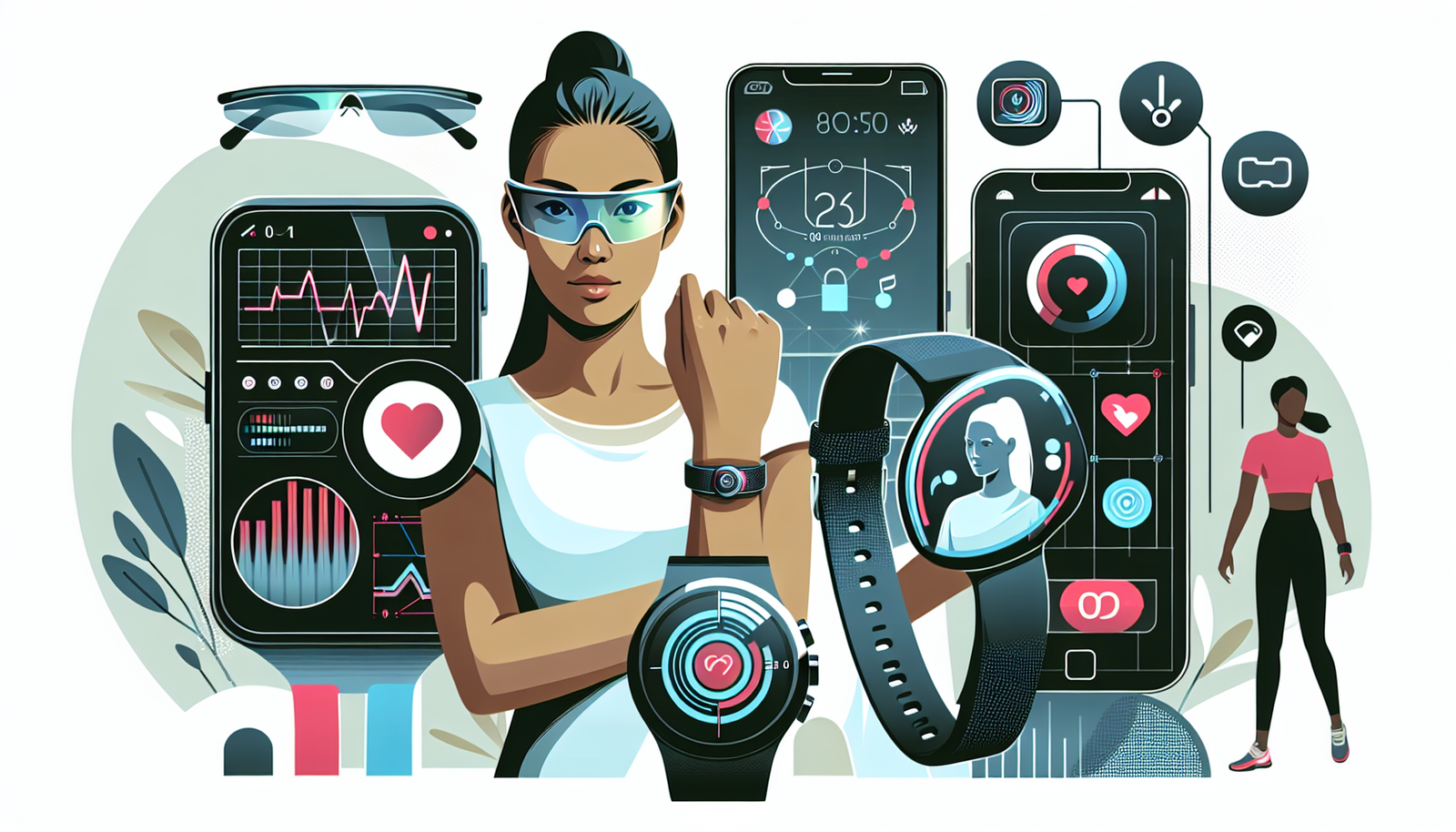In today’s fast-paced world, it seems like technology is advancing at lightning speed, and keeping up with all the latest gadgets can be overwhelming. That’s where wearable tech comes in. This article, “A Guide to Wearable Tech: Everything You Need to Know,” is your one-stop resource for understanding and exploring the world of wearable technology. From smartwatches to fitness trackers, we’ll take you on a journey to discover the endless possibilities and advantages that these innovative devices have to offer. So, whether you’re a tech-savvy enthusiast or simply curious about what wearable tech can do for you, get ready to embark on an exciting adventure into the future of technology.
What is Wearable Tech?
Wearable tech refers to electronic devices that are designed to be worn on the body, typically as accessories or clothing items. These devices are equipped with advanced sensors, processors, and wireless connectivity, allowing them to collect and transmit data, as well as perform various functions. The main purpose of wearable tech is to enhance convenience, accessibility, health, and productivity for the user.
Definition of Wearable Tech
Wearable tech encompasses a wide range of devices, including smartwatches, fitness trackers, smart glasses, smart clothing, and hearables. These devices are designed to seamlessly integrate with our daily lives, providing us with real-time information and feedback, as well as enabling us to stay connected and engaged with our surroundings.
Key Features of Wearable Tech Devices
The key features of wearable tech devices include:
-
Sensors: Wearable devices are equipped with various sensors such as accelerometers, gyroscopes, and heart rate monitors. These sensors collect data about the user’s movements, biometrics, and surrounding environment.
-
Connectivity: Wearable devices are often connected to smartphones or other devices via Bluetooth or Wi-Fi. This connectivity enables seamless data transfer, as well as the ability to control and interact with the device using a companion app.
-
Display: Most wearable devices come with a display, which can be a small screen, LED lights, or even audio feedback. The display allows users to view notifications, track their progress, or access information without having to use their smartphones.
-
Battery Life: Since wearable devices are meant to be worn throughout the day, battery life is an important consideration. Many devices offer long battery life or quick charging options to ensure that they can keep up with the user’s active lifestyle.
-
Design and Comfort: Wearable tech devices come in various styles, sizes, and materials to cater to different preferences. The design focuses on ensuring comfort and ease of use, allowing users to wear the device comfortably for extended periods.
-
App Ecosystem: Wearable tech devices often come with dedicated companion apps that provide additional functionalities. These apps allow users to customize their device settings, track their progress, and sync data with other platforms or apps.
Types of Wearable Tech
There are several different types of wearable tech devices available in the market, each designed to serve a specific purpose and cater to different user needs.
Smartwatches
Smartwatches are wrist-worn devices that offer a wide range of features beyond just telling time. They usually have a touchscreen display and offer functionalities such as notifications, phone calls, fitness tracking, app support, and more. Smartwatches often require a connection to a smartphone to unlock their full potential.
Fitness Trackers
Fitness trackers, also known as activity trackers or fitness bands, monitor and track various activities and biometric data such as steps taken, distance traveled, heart rate, sleep patterns, and more. These devices are targeted towards people who are health-conscious and want to monitor and improve their fitness levels.
Smart Glasses
Smart glasses are eyewear that incorporate a heads-up display (HUD) or augmented reality (AR) technology. They can display information directly in the user’s field of vision, providing real-time data and enhancing the user’s perception of their environment. Smart glasses have various applications, including sports, healthcare, and industrial use.
Smart Clothing
Smart clothing refers to garments embedded with electronic components and sensors. These garments can monitor various aspects of the wearer’s body, such as heart rate, posture, or body temperature. Smart clothing is often used in sports and fitness applications, where real-time data can provide insights and help improve performance.
Hearables
Hearables are wearable devices that are designed for audio-related functions, such as listening to music, making phone calls, or providing audio notifications. Hearables include devices like wireless earbuds, headphones, or ear-worn devices equipped with additional features such as voice assistants and biometric sensors.

Advantages of Wearable Tech
Wearable tech offers several advantages that enhance different aspects of our lives. Here are some key benefits of using wearable tech devices:
Enhances Convenience and Accessibility
Wearable tech devices provide instant and convenient access to information, notifications, and functionalities without the need to constantly check our smartphones. They enable us to stay connected, whether it’s receiving important calls, responding to messages, or accessing useful information on the go.
Improves Health and Fitness
Many wearable tech devices are specifically designed to help users monitor and improve their health and fitness. These devices track activities, sleep patterns, heart rate, and more, allowing users to set goals, track progress, and make informed decisions about their lifestyle choices. Wearable tech promotes a more proactive approach to personal well-being.
Enhances Productivity and Efficiency
With wearable tech devices, users can efficiently manage their tasks, schedules, and notifications without having to constantly reach for their smartphones or computers. Whether it’s receiving reminders, checking emails, or setting timers, these devices streamline our daily activities and enable us to stay focused and organized.
Popular Brands and Models
The wearable tech market is flooded with a variety of brands and models that offer different features and functionalities. Here are some popular brands and their flagship models:
Apple Watch Series
The Apple Watch Series is one of the most iconic smartwatches on the market. It offers a wide range of features, including fitness tracking, heart rate monitoring, app support, notification management, and more. The Apple Watch Series is known for its sleek design, intuitive interface, and seamless integration with Apple’s ecosystem.
Fitbit Versa
Fitbit is a well-known brand in the fitness tracker industry, and the Fitbit Versa is their flagship product. The Versa offers comprehensive fitness tracking, sleep monitoring, heart rate monitoring, and a variety of exercise modes. It also features smartphone notifications, music control, and a long battery life.
Samsung Gear
Samsung Gear smartwatches are known for their stylish design, vibrant displays, and wide range of features. These smartwatches run on Samsung’s Tizen operating system and offer functionalities like fitness tracking, heart rate monitoring, app support, and even cellular connectivity in some models.
Garmin Forerunner
Garmin Forerunner series is specifically designed for athletes and fitness enthusiasts. These GPS-enabled smartwatches provide accurate tracking of various activities, including running, cycling, swimming, and more. The Forerunner series also offers advanced performance metrics, heart rate monitoring, and customization options for different sports.
Google Glass
Google Glass was one of the pioneers in the smart glasses category. Although the original consumer version is no longer available, Google continues to develop and offer enterprise-grade smart glass solutions. Google Glass provides features like hands-free access to information, camera capabilities, and augmented reality overlays, primarily targeted towards professional use cases.

Choosing the Right Wearable Tech
Choosing the right wearable tech device depends on your needs, preferences, and intended use. Here are some factors to consider when selecting a wearable tech device:
Identify Your Needs and Goals
Before purchasing a wearable tech device, consider what features and functionalities are important to you. Do you want a device primarily for fitness tracking, or do you need more advanced features like app support or cellular connectivity? Identifying your needs and goals will help narrow down your options.
Consider Compatibility and Connectivity
Check if the wearable tech device you are considering is compatible with your smartphone or other devices. Consider the connectivity options, such as Bluetooth or Wi-Fi, and ensure that the device can seamlessly integrate with your existing ecosystem.
Evaluate Design and Comfort
Since wearable tech devices are meant to be worn for extended periods, it’s essential to consider the design and comfort of the device. Look for a device that fits well, is lightweight, and made of high-quality materials. User reviews can provide valuable insights into the comfort and durability of different devices.
Assess Battery Life and Charging
Battery life is an important consideration, especially if you plan to use the wearable tech device throughout the day without frequent charging. Look for devices that offer long battery life or quick charging options to ensure that the device can keep up with your usage patterns.
Comparisons and Reviews
To make an informed decision, it’s important to compare different models and read reviews from users and experts. Here are some valuable resources for comparing and reviewing wearable tech devices:
Comparison of Smartwatch Models
Comparisons of smartwatch models can help you understand the differences in features, performance, and design. Look for detailed comparisons that highlight the strengths and weaknesses of each model, and consider how well they align with your specific requirements.
Comparison of Fitness Tracker Models
Comparisons of fitness tracker models can help you evaluate the tracking and monitoring capabilities, as well as additional features offered by different devices. Pay attention to the accuracy of data, ease of use, and the compatibility of tracking metrics with your fitness goals.
Reviewing Smart Glasses
Reviews of smart glasses can provide insights into the user experience, display quality, battery life, and overall performance of different models. Look for feedback from users who have used smart glasses in various scenarios to understand their real-world applications.
Assessing Smart Clothing Options
As smart clothing is a niche category, it’s important to read reviews and assessments of different options available. Pay attention to the accuracy of biometric tracking, ease of use, comfort, and durability of the smart clothing items.
Wearable Tech and Health
Wearable tech has a significant impact on health and well-being. Here are some ways in which wearable tech devices contribute to better health:
Fitness Tracking and Activity Monitoring
Wearable tech devices, such as fitness trackers and smartwatches, offer accurate tracking and monitoring of various activities, including steps taken, calories burned, sleep patterns, and heart rate. This data allows users to gain insights into their fitness levels, set goals, and make informed decisions about their physical activity.
Biofeedback and Health Monitoring
Many wearable tech devices provide biofeedback capabilities, such as heart rate monitoring, blood pressure monitoring, and stress level tracking. These features can help users manage their health conditions, monitor stress levels, or track recovery progress after intense physical activities.
Assistive Technology for Disabilities
Wearable tech devices can also serve as assistive technology for individuals with disabilities. For example, smart glasses equipped with augmented reality can provide real-time guidance for people with visual impairments. Similarly, wearable tech devices can provide audio notifications or voice control for individuals with mobility limitations.
Privacy and Security Concerns
While wearable tech offers many benefits, it also raises privacy and security concerns. Here are some important considerations:
Data Collection and Privacy
Wearable tech devices collect various types of personal data, including biometric information, activity logs, and location data. It’s essential to understand what data is being collected, who has access to it, and how it is stored and protected. Read the privacy policy of the device and manufacturer to ensure your data is handled responsibly.
Protecting Personal Information
Maintaining the security of personal information is crucial when using wearable tech devices. Set up password protection or biometric authentication on your device to prevent unauthorized access. Be cautious when sharing data or connecting to unsecured networks, and only install apps from trusted sources.
Securing Wearable Tech Devices
Keep your wearable tech devices up to date with the latest software updates and security patches. Regularly review the device’s settings and permissions to ensure that only necessary data is being shared. If you lose your device, take immediate steps to locate it or remotely erase any stored data to prevent unauthorized access.
Future of Wearable Tech
Wearable tech is constantly evolving, and the future holds several exciting possibilities. Here are some potential advancements on the horizon:
Advancements in Artificial Intelligence
Artificial intelligence (AI) will play a significant role in the evolution of wearable tech. AI algorithms will analyze user data to provide personalized insights, recommendations, and predictive analytics. This will enable devices to adapt and learn from users’ behaviors, ultimately enhancing the user experience.
Integration with Internet of Things
Wearable tech devices will increasingly integrate with the Internet of Things (IoT) ecosystem. This integration will enable seamless connectivity between devices, allowing for a more holistic approach to data collection and analysis. Wearable tech devices will become an integral part of the smart home, smart city, and other IoT-enabled environments.
Potential Health and Medical Applications
Wearable tech has the potential to revolutionize healthcare and medical applications. With advancements in sensor technology, wearable devices will become more accurate in monitoring health conditions and vital signs. This data can help with early detection of diseases, remote patient monitoring, and personalized treatment plans.
Tips for Using Wearable Tech
To make the most out of your wearable tech device, here are some useful tips:
Read User Manuals and Guides
Take the time to read the user manual and guides provided with your wearable tech device. Familiarize yourself with the device’s features, settings, and recommended usage guidelines. This will ensure that you are using the device to its full potential and taking advantage of all the functionalities.
Set Realistic Goals
When using a fitness tracker or smartwatch, set realistic goals based on your fitness level and lifestyle. Gradually increase the intensity or duration of your activities over time. Tracking your progress and achieving small milestones will help you stay motivated and make sustainable lifestyle changes.
Maintain Regular Software Updates
Keep your wearable tech device up to date by regularly installing software updates and firmware upgrades. These updates often include bug fixes, performance improvements, and security enhancements. Staying up to date with the latest software will ensure that your device continues to operate smoothly and securely.
Practice Data Security
Be mindful of the data collected by your wearable tech device and take steps to protect it. Utilize password protection or biometric authentication, and enable encryption if available. Avoid sharing personal data with third-party apps or platforms unless necessary, and be cautious when granting permissions to access your device’s data.
In conclusion, wearable tech offers a wide range of devices and functionalities that aim to enhance convenience, health, productivity, and accessibility. From smartwatches to fitness trackers, smart glasses to smart clothing, and hearables, there is a wearable tech device to meet every need and preference. By considering factors such as design, compatibility, battery life, and user reviews, you can choose the right device for your lifestyle. Wearable tech devices have the potential to positively impact our lives, improve our health, and pave the way for a more connected and personalized future. Remember to prioritize privacy and security, keep your device updated, and explore the exciting advancements that the future holds for wearable tech.

